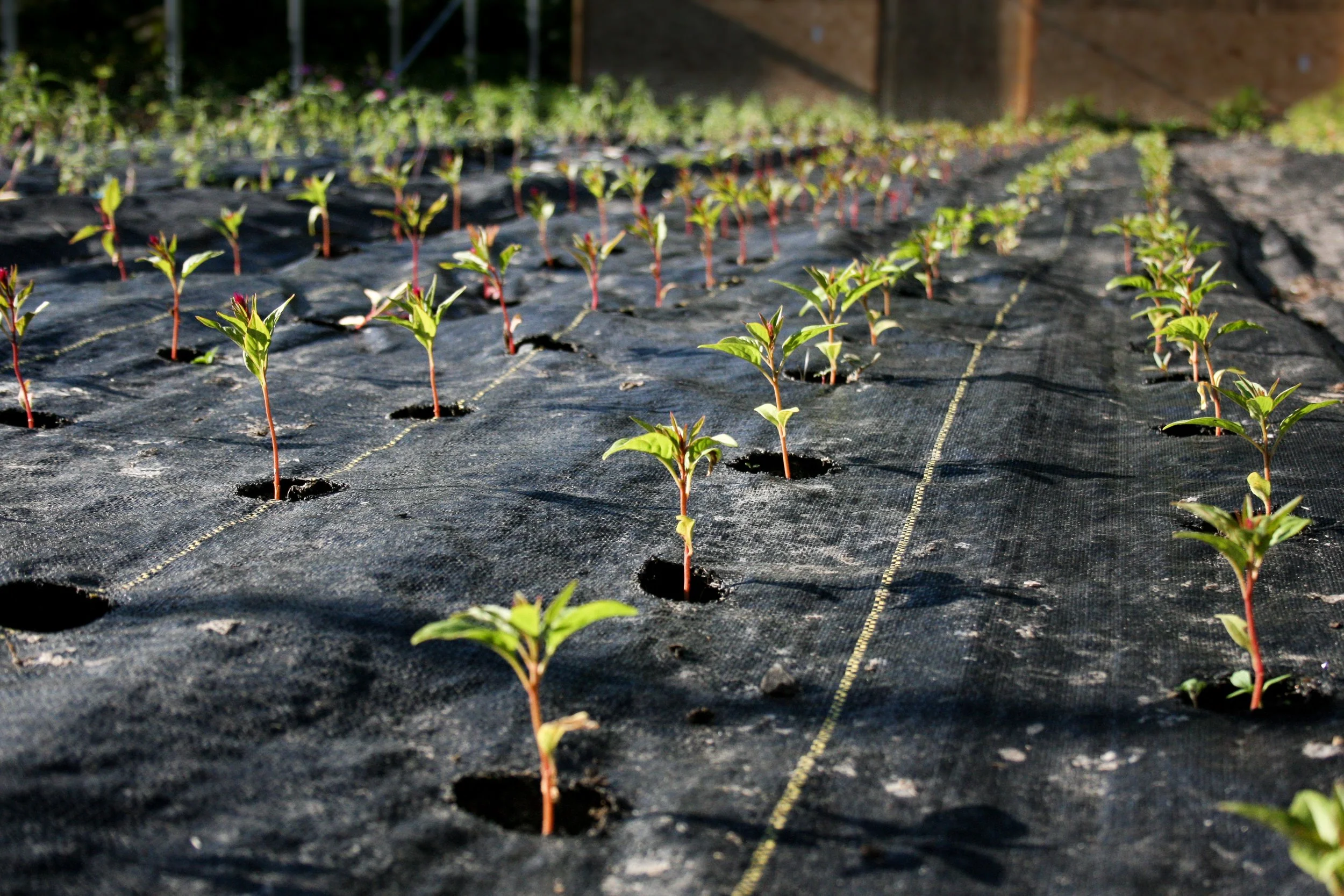5 Ways to Prevent Weeds in Your Own Garden
Weeds.
They are the worst.
Apparently soil scientists claim they serve a purpose to prevent soil erosion and what-not. Fine.
I thought it would be helpful to share with you five different ways that you can PREVENT weeds from starting BEFORE they appear and/or get big and outta control.
I use two of these methods together at the farm and will share my personal experiences with them, and the rest is what I have gathered from years of research.
METHOD 1: Stale Seedbed
Have you ever noticed that when you leave a bucket on your grass for a few days midsummer, only to find that when you pick up the bucket, the grass underneath has died?
Imagine leaving something opaque on your garden for more than a month. Like a giant tarp, for example.
The result is not only dead grass/weeds, but the retained moisture and heat underneath the tarp trigger weed seeds to sprout, only to die because there is no sunlight for them.
Thus, you’re killing both established seeds and killing the seed bank.
At the farm, we leave giant tarps on the ground for a month at a time. When we lift them, the grass underneath has decayed and died, leaving a stale seedbed.
Fun tip: If you don’t have a tarp on hand, you could ask around for recycled billboards.
Tarping Method for weed prevention
METHOD 2: Lasagna Method
It’s exactly what it sounds like–layering things on top of the ground to form new bed on top of the native soil.
At Aurora Flora, we lay down painters paper/builders paper all along the rows we intend to plant. The thicker the paper, the better, as it will take longer to break down. Some farmers use cardboard, it’s just more expensive and harder to get in large quantities.
To weigh the paper down, we then lay about two inches of compost all along the paper.
At planting time, we simply poke holes through to the paper and stick the babies in.
With this method, both the paper and the compost act as a mulch/barrier to the weeds underneath.
When we replant mid-season, we will reapply the paper mulch and the compost, adding more and more layers as more seasons progress.
Lasagna method of weed prevention (after a stale seed bed)
METHOD 3: Deep Mulch System
This one is similar to method 2, but rather than layering a bunch of stuff, you simply pile on a bunch (and I mean a bunch) of compost (or potting soil, or a mix of topsoil with compost).
When I say deep, I mean at least 6 inches. The best way to hold this in is building raised beds, which most people do anyways in this terrible North Carolina red clay.
When “mulch” (in this case, soil) is this deep, it smothers the weeds before and gives you a clean slate to start.
This is the method I use for my Dahlias in my backyard, since Dahlias need only excellent soil and good drainage.
Deep mulch system in a raised bed garden
METHOD 4: Black Landscape Fabric
Many farmers in the north choose to use landscape fabric. It’s easy to buy in large quantities at Johnny’s Selected Seeds, for example.
You simply lay out the fabric over your planting bed and burn holes for to plant your plants into.
The fabric blocks out the light, thus eliminating weeds.
I choose not to use this method because it’s just too hot here in the south–that black plastic will fry those little plant babies on any super sunny day.
But it works for most areas of the country!
Landscape fabric as weed prevention
METHOD 5: Spray Preemergent
This method is the only non-organic method listed, but that doesn’t always mean it’s a bad thing. There are plenty of farmers who would rather spray pre-emergent than buy a bunch of one-time use plastic as a weed barrier, and I see their point.
I don’t know which pre-emergents work the best, that is something you’d have to research, but I do know they work if you use them at the right time.
You would need to start with the stale seedbed, and then spray pre-emergent to stop anymore seeds from germinating.
From what I understand, pre-emergent should last the whole season.
There you have it! As a quick overview, I use the first two methods at Aurora Flora. While I still have many weeds on the farm, this helps me eliminate excess waste (i.e. plastic), build good soil, while avoiding spraying any harsh chemicals.
If I’m missing anything that you’ve tried, don’t hesitate to drop a comment to enlighten us!





